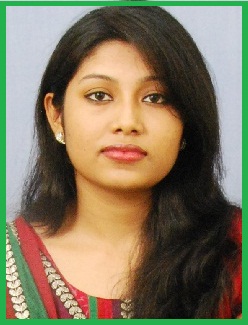JOURNALS || ASIO Journal of Engineering & Technological Perspective Research (ASIO-JETPR) [ISSN: 2455-3794]
ARTICLE DESCRIPTION:
ARTICLE TYPE: REVIEW
dids/doi No.: 01.2016-19818151
dids link: http://dids.info/didslink/06.2016-39388836/
ABSTRACT:
The quality of drinking water is an vital factor in determining human wellbeing. It has been noted that polluted drinking water is the cause for waterborne diseases which wiped out the entire populations of cities. The major sources of water pollution are domestic waste from urban and rural areas, and industrial wastes which are discharged into natural water bodies. The rivers and lakes near urban centers emit disgusting odors and fish are being killed in millions along the sea coasts. A number of microorganisms and thousands of synthetic chemicals have the potential to contaminate ground water. Drinking water containing bacteria and viruses can result in illnesses such as hepatitis, cholera, or giardiasis. Methemoglobinemia or “blue baby syndrome,” an illness affecting infants, can be caused by drinking water that is high in nitrates. Now a day, many speculate cleaning detergents are available in the market. These washing detergents consist of different chemical components; surfactants, builders, fillers, bleaches, enzymes, optical brighteners, anti-redeposition agents, perfume and colour. These, detergents make our clothes seem whiter or brighter by absorbing ultraviolet light and remitting blue light. Residential, municipal, commercial, industrial, and agricultural activities can all affect ground water quality. Contaminants may reach ground water from activities on the land surface, such as releases or spills from stored industrial wastes; from sources below the land surface but above the water table, such as septic systems or leaking underground petroleum storage systems; from structures beneath the water table, such as wells; or from contaminated recharge water. Water pollution may be defined as the contamination of streams, lakes, seas, underground water or oceans by substances, which are harmful for living beings. Industrialization and population explosion are two important factors for water pollution.
- S. R. Baker, The Effects of Pesticides on Human Health, In: C. F. Wilkinson Ed., Advances in Modern Environ- mental Toxicology, 1990.
- M. Margni, D. Rossier, P. Crettaz and O. Jolliet, Life Cycle Impact Assessment of Pesticides on Human Health and Ecosystems, Agriculture, Ecosystems and Environ-ment, 2002, Vol. 93, No. 1-3, December, pp. 379-392.
- G. R. Hallberg, Pesticide Pollution of Groundwater in the Humid United States, Agrigulture, Ecosystem and Environment, 1989,Vol. 26, No. 3-4, pp. 299- 367.
- Hathi Daksha, Meet the House Cleaning Brigade, Spectrum. The Tribune, 2007, February 11, P. 1.
- Kannan V, Ramesh R, Kumar S, Study on ground water characteristics and the effects of discharged effluents from textile units at Karur District. J Environ Bio, 2005, 26(2): 269-72.
- Xul Y, Toxic effects of washing powder on incubation of carp eggs in Dianchi lake. J Environ Geo, 1996, 40(2): 229-232.
- Oranskey, Seizures Temporally Associated with the Use of DEET Insect Repellent—New York and Con-necticut,” Pesticides in the Diets of Infants and Children, National Academy Press, Washington, D.C., 1993.
- Science Daily, 12 March 2009. http://www.science daily.com/releases/2009/03/090306084639.htm
- P. B. Singh and V. Singh, Pesticide Bioaccumulation and Plasma Sex Steroids in Fishes during Breeding Phase from North India,” Environmental Toxicology and Pharmacology, 2008, Vol. 25, No. 3, pp. 342-350.



